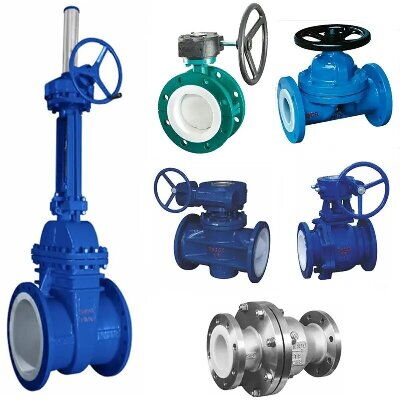Selecting and Using Fluorine-Lined Valves in Industrial Applications
In industries such as chemical, pharmaceutical, and petroleum, fluorine-lined valves play a crucial role as key equipment in safeguarding production systems and regulating fluid flow. However, when facing corrosive environments, choosing the appropriate fluorine-lined valve and using it correctly are vital steps in ensuring process safety and productivity. Below, we delve into the scientific selection and effective utilization of fluorine-lined valves to ensure their stable operation under various conditions.

1. Temperature Control
The temperature resistance range of fluorine-lined valves is a critical factor determining their functionality. When selecting these valves, it's essential to choose the lining material based on the temperature of the medium, ensuring that the medium temperature remains below approximately 30% of the material's maximum temperature resistance. This helps prevent deformation of the lining material due to excessive temperatures, which could otherwise lead to decreased valve performance or leakage risks.
2. Pressure Management
Fluorine-lined valves are typically unsuitable for high-pressure or high-pressure differential conditions. Using them in such environments may result in the lining layer being pulled out or delaminated, thereby affecting the valve's normal operation. For applications with high pressure or pressure differentials, alternative valve types or additional reinforcement measures are necessary to ensure safe valve operation.
3. Medium Requirements
The medium used with fluorine-lined valves should not contain hard particles, crystals, or impurities. These impurities accelerate valve wear and reduce its service life. If the medium contains hard particles or crystals, considering corrosion-resistant materials such as Hastelloy, nickel-based alloys, etc., can ensure the long-term stability of the valve's operation.
4. Valve Size Selection
Fluorine-lined control valves typically feature a fluorine-lined bellows seal structure, offering excellent corrosion resistance and leak-free performance. When selecting valve sizes, it's crucial to calculate based on process parameters and ensure that the normal opening degree falls within the range of 30% to 85%. This prevents the valve from operating at small opening degrees for extended periods, thus preserving its regulating performance and stability.
5. Maintenance and Care
Regular inspection and maintenance of fluorine-lined valves are essential to ensuring their long-term stable operation. Periodically cleaning the valve internals, inspecting lining material wear, and promptly replacing severely worn components can extend the valve's service life.
In conclusion, selecting and using fluorine-lined valves correctly are crucial for ensuring the normal operation of production equipment and enhancing productivity. When choosing valves, considering factors such as temperature, pressure, and medium characteristics is essential to ensure their stable and reliable operation in harsh environments. Additionally, regular maintenance and care are indispensable for prolonging valve service life and reducing equipment maintenance costs. With proper selection and scientific management, fluorine-lined valves will provide reliable protection for enterprise development.
